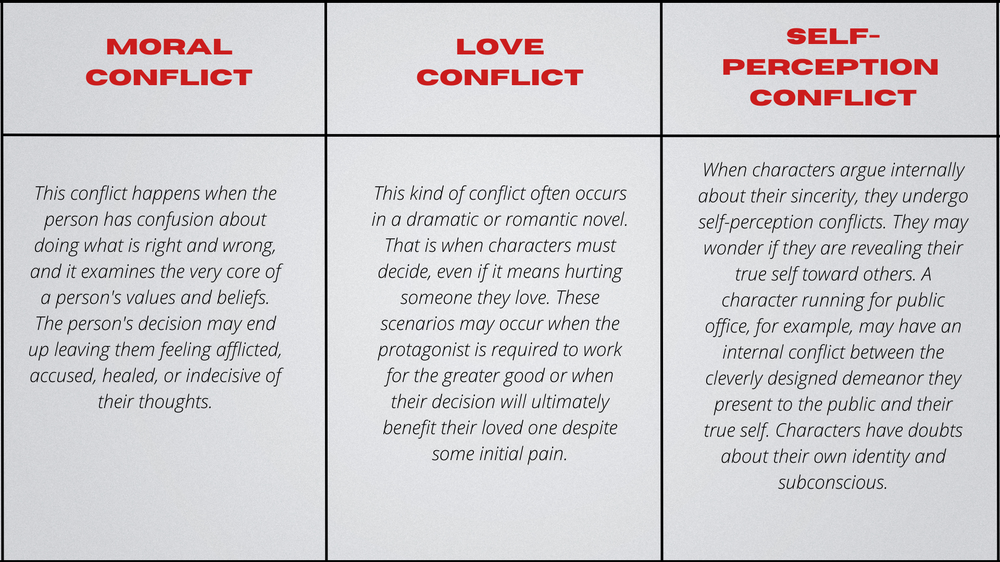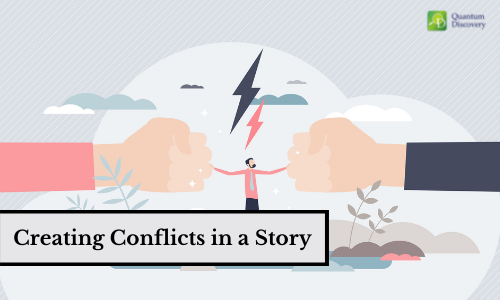The underpinning of storytelling is conflict. Every story is all about a character who runs into trouble and then seeks to get out of it. A story is not even a story unless there’s something to push up against; otherwise, it’s just a series of events with no stakes.
As a narrative structure principle, you could articulate conflict using the following formula:

It explains that the lead character desires something in every story, but something else prevents them from obtaining it. This interaction between the characters’ wants and obstacles drives every story. The plot will be dreary and misleading if the central conflict is boring or nonsensical. However, if the battle is persuasive, coherent, and emotionally compelling, readers will desperately find out how it all turns out.
Now, there are two primary types of conflicts that you can use in your story. What are these? Read more below.
EXTERNAL CONFLICTS
The dilemma between characters and the external pressures that deter them from achieving their goals is known as external conflict. This type of conflict is typically interpersonal or social. They either occur on a grander, structural dimension among both categories of individuals or on a lesser, individual scale.
External conflict can provide the story’s reason for existence— the opposition compels the character to change to meet goals. It is also frequently associated with the central theme or argument that the author wishes to showcase.
What are the basic kinds of external conflicts? Study this table:

Without this issue, stories are as dull as going about your everyday affairs. The story would not move forward. And besides, who intends to sit and read those kinds of stories without feeling a rush of adrenaline? No one, most likely.
INTERNAL CONFLICTS
Internal conflict is the struggle within a character between emotional reactions, virtues, or aspirations that prevent them from achieving their intended goal. These conflicts can arise from any combination of the character’s perceptions, needs, wants, commitments, and worries. And while they may also emerge from external circumstances in which nature must decide, they are ultimately about the battle within a character’s heart and mind rather than the external forces.
The conflict mostly happens when the character experiences inner turmoil, either mentally or emotionally. For example, consider a woman resisting the urge to smoke because she needs to due to illness, but her mental desire to do so is very intense. An internal struggle is what happens when her willingness and hesitation collide.
What are the types of Internal Conflict? I will mention some in the table below.

The conflicts stated above are an essential component of literature. They develop a character’s ambition, moral standards, and charisma. In addition, it helps carry the character forward over the story.
A compelling inner conflict is frequently morally ambiguous or timeless, and it is this that will eventually resonate with your audience. It is also often used to establish a central character.
How would you balance External and Internal Conflicts in one story?
The job of a writer is to make the journey enjoyable. Interpretations are generally not to be feared as long as you can do that. One way to do it is to balance and make every conflict a clear impediment to the character’s objectives.
For example, in the film “Titanic,” the central characters’ external conflict could be surviving the cruel disaster of the sinking ship’s territory and saving their lives before the boat sinks. Their internal conflict could be their apprehension of the cold and their fear of the ocean depths. So, there is a balance of conflict here. The ocean is vast and deep, and to escape, the protagonist must overcome their fears or find a way around them.
Internal and external conflicts are difficult to reconcile, but a fleshed story unfolds when one informs the other. Meaning there’s mutual cohesion between the two. And also, don’t forget that even your minor characters require their disputes. Don’t forget to give those minor characters their struggles, no matter how insignificant they are in the big picture of your graph.
In general, a story with no conflicts is like waiting for the train in one corner. Nothing is more boring than that.
Are you looking for a literary agent? Handing your book to publishers is a daunting task. However, companies like Quantum Discovery can help you with your needs when it comes to having your book delivered to the right publisher. Contact our professionals by calling (888) 523-1025 or visiting ,quantumdiscovery.net to know more.
